|
Wingham Well
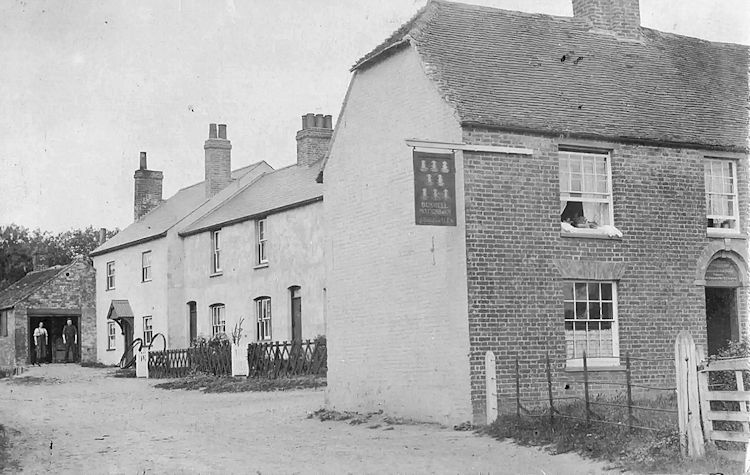
Above photo 1898. Kindly sent by Rory Kehoe. A
tied house of Bushell, Watkins' Black Eagle Brewery, Westerham. |
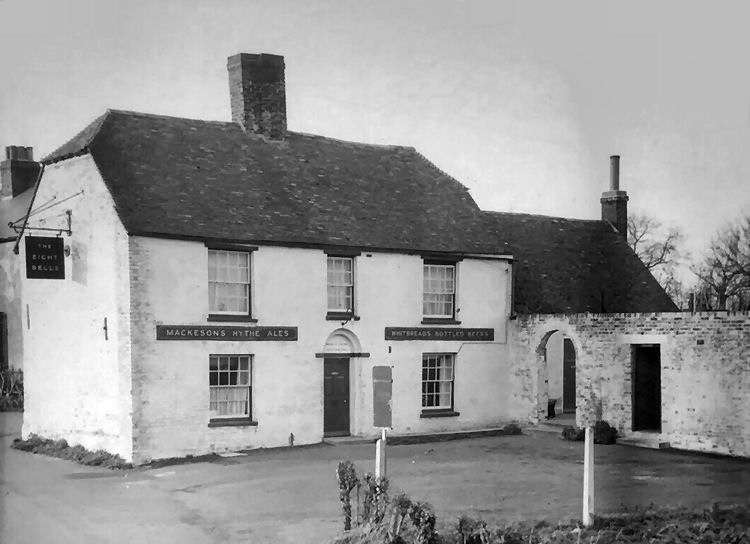
Above photo, date unknown, kindly sent by Debi Birkin. |
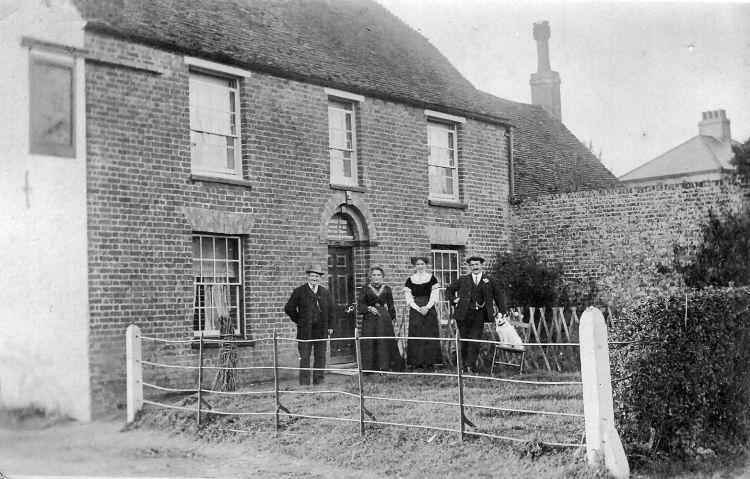
Above photo kindly sent by Raymond Beeching, showing the "Eight Bells"
circa 1900. He goes on to say that the photo shows his great great
grandfather; son and daughter, his son HAROLD GURR was the licence of
the "Eight Bells;" which can be seen above the doorway. |
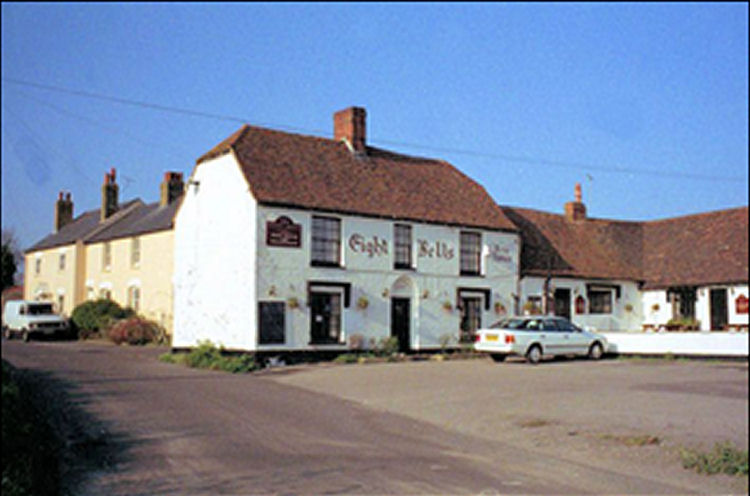
Above shows the Eight Bells as seen in 1983. |
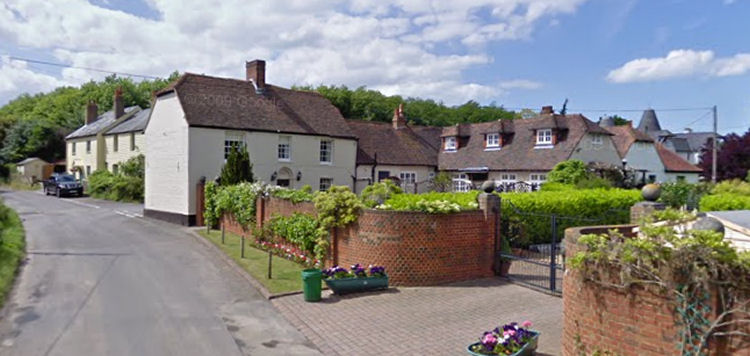
Former Eight Bells as seen from Google Maps 2009. |
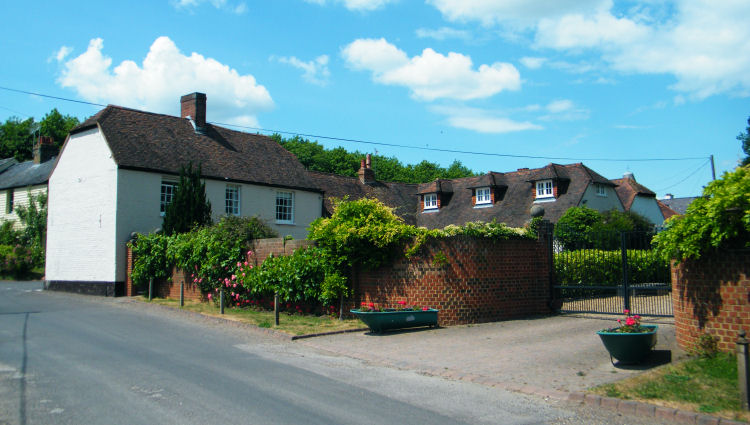
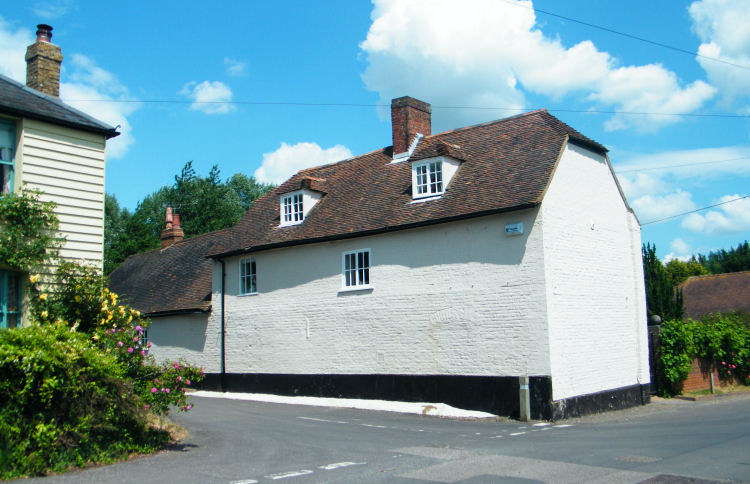
Above 2 photographs by Paul Skelton, 31 May 2011. |
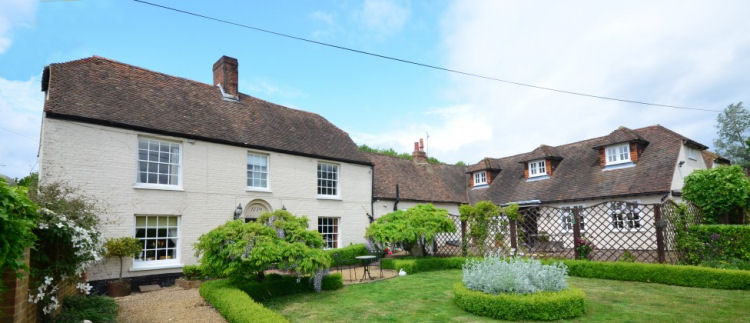
Above photo showing the premises in 2015. |
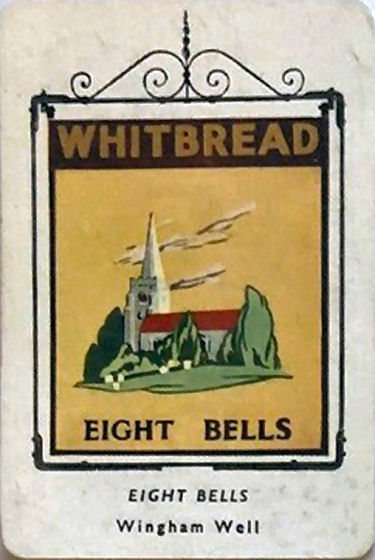 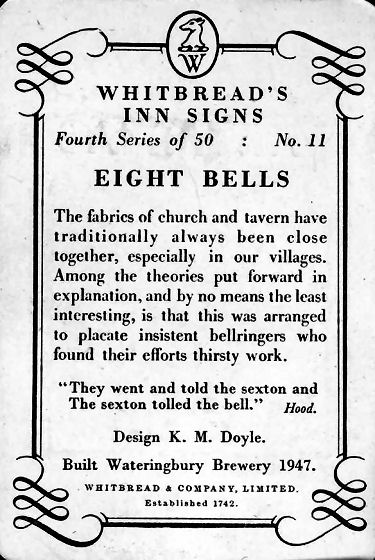
Above card issued March 1953. Sign series 4 number 11. |
The pub was known as a beerhouse in 1907, but the premises can be traced
back to 1740. The pub takes its name from the eight musical bells which were
re-cast from the original six at St Mary's Church in Wingham in 1719.
Earliest reference found so far is in the Wingham Division Ale Licence
list, which shows the "Eight Bells," Wingham, (assumed to mean
Wingham Well), to be re-licensed for the sum of 8 shillings in
1740 indicating that the pub was present before 1740.
The "Inns of Sport; Whitbread & Co. Ltd.; 1949 says the following about
the pub:-
"But to go back to Canterbury and our fishing. There is an inn at Wingham
Well, six miles east of the city, which they call The "Eight Bells" and from
it you can fish that charming river, the Little Stour or, indeed, its parent
river, the Stour itself. [...] The "Eight Bells" was built about 1719 and it
has gone through almost every stage of the noble hierarchy of beer, for it
began as a malthouse, became a brewery and is now an inn."
The pub gained an extension to the licensing hours in 1950, making Summer
Time hours all year round, after being put to the Magistrates at the Wingham
Licensing Sessions, with a petition of 66 people and the payment of an extra
£575 monopoly value. The pub was now allowed to open for a maximum 8½
hours a day.
I am not certain when the house finally closed, but it
is now registered as a listed building with the following description:-
Public house. Dated 1779. Painted brick and plain
tiled roof. Two storeys and attic on plinth with half-hipped roof and
central stack. Regular fenestration of 3 glazing bar sashes on first floor
and 2 on ground floor with central boarded door in double rebated surround
dated 1779 in tympanum. Single storey wing to right with 2 wooden casements
and boarded door.
Listing NGR: TR2309156654
The B. C. Bushell's tied house, acquired
Watkins' Swan Brewery, Westerham, in 1897 and Alfred Smith's Old Brewery,
Sevenoaks, in 1899. This pub may have been one of the 15 or so pubs owned by
Alfred Beer's Original Brewery, Canterbury, which was declared bankrupt in
1891. In 1894 the former Original Brewery pubs were sold to sold to B. C.
Bushell. Years later, Bushell, Watkins & Smith swapped some of their East
Kent houses for some Mid/West-Kent Whitbread pubs, supplied by their
subsidiary, Frederick Leney's Phoenix Brewery, Wateringbury. The pub then
became a Mackeson's house, as Whitbread's owned the Hythe Brewery too.
|
From the Kentish Chronicle and General Advertiser, 18 January, 1862. Price 1 1/2d.
INQUEST AT WINGHAM.
T. T. Delasaux, Esq, coroner, held an inquest on Tuesday, at the “Eight
Bells,” on the body of Thomas Measdy, aged 27 years, a waggoner in the
service of Mr. Ratcliffe, of Goodnestone. His death was caused by the
near wheels of a waggon passing over him.
Charles Baker:— I live at Goodnestone and was mate to the deceased who
was waggoner to Mr. Ratcliffe. I was returning from Canterbury with the
deceased. We had a waggon and three horses under our charge, and when we
had got within a short distance of Wingham Well, we met a horse that had
run away and which frightened our horses and they started off, deceased
being at the time in the waggon and I driving them. As the horse that
had run away was coming up the hill, I stopped my three horses and
caught the horse. There was another young man in the waggon with the
deceased who got out and took the horse from me. I then started off, and
the deceased was getting out of waggon when he fell, and the wheels
passed over his neck, and killed him. I believe that in getting down the
deceased touched one of the horses, which made it kick, and thus threw
the deceased.
The jury found a verdict of “Accidental Death.”
|
|
From the Dover Express and East Kent News, Friday 14 March, 1884. 1d.
AN OPPOSED PUBLIC-HOUSE TRANSFER
Mr. H. T. Johnson, of Canterbury, applied for a temporary authority to
sell until the next transfer day, to be granted to Robert Hammond, in
respect of the “Eight Bells Inn,” Wingham Well.
Superintendent Kewell opposed the application on the grounds of immoral
character of the wife of Hammond, but it was decided to grant permission
until the next transfer day.
|
|
From the Dover Express and East Kent News, 7 March, 1919.
WINGHAM PETTY SESSIONS
Mr. K. A. Mowll appealed for the renewal of the licence of the "Eight
Bells," Wingham, with which the Magistrates had objected to on the
grounds of redundancy.
Superintendent Stone said that the tenant was Mr. H. Gann and the
owners were Messrs. Bushell, Watkins nd Co. The tenant was in the employ
of the Wingham Agricultural Employment Co. It was used by field workers.
There were 80 cottages that might use the house. The nearest public
house was the "Volunteer," at
Bramling.
Lord Northbourne to the tenant - Do you think your customers take too
much? - No, my lord, they do not have enough (laughter).
Mr. A. K. Mowll said that in other words it might be said that there
were licensed houses in the immediate vicinity, but in this case there
were no licensed houses anywhere near.
|
|
From the Dover Express, 20 October 1933.
WINGHAM PETTY SESSIONS.
The “Eight Bells," Canterbury was granted an occasional licence for a
sale at Claypits Farm, Goodnestone, on 26th October.
|
|
From the Dover Express and East Kent News, 26 August, 1938. Price 1½d.
DENE HOLE DISCOVERY
A Dene Hole has been discovered in the garden of the “Eight Bells,”
Wingham Well, which is close to Bramley Down, near Littlebourne. The
surface collapsed when workmen were investigating a sinking in the
ground. The cavity is 20ft. deep, 30ft. x 18ft. with a pitch of from
8ft. to 14ft., and there are several side tunnels. The side road, under
which the cave runs, has been closed.
There are many such cavities, known as Dene Holes, in East Kent. The
purpose for which they were made is a matter of surmise. Some schools of
thought regard them as ancient hiding places, whilst others believe they
were excavations to get a particular strata of chalk that was best for
use on the land.
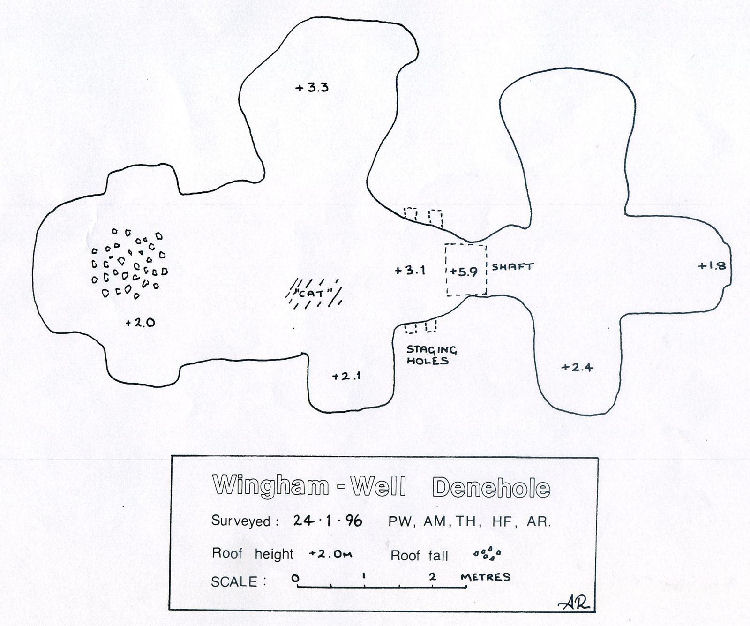
Above shows the layout of the Dene hole found at the pub. Kindly
supplied by Paul Wells.
|
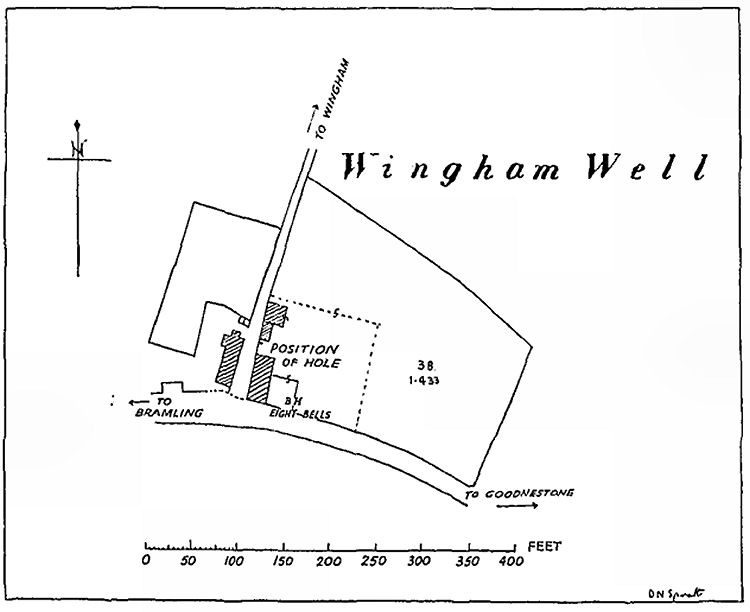
Above map showing the position of the Dene hole. |
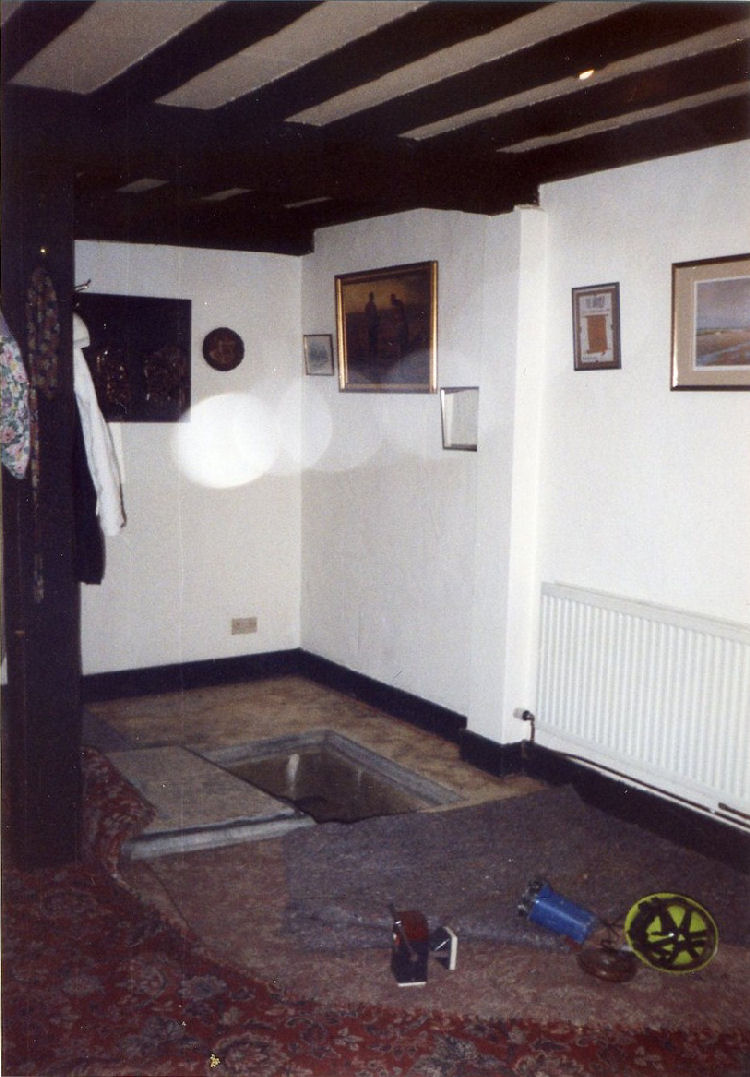
Above picture showing the entrance to the Dene hole, supplied by Paul
Wells.
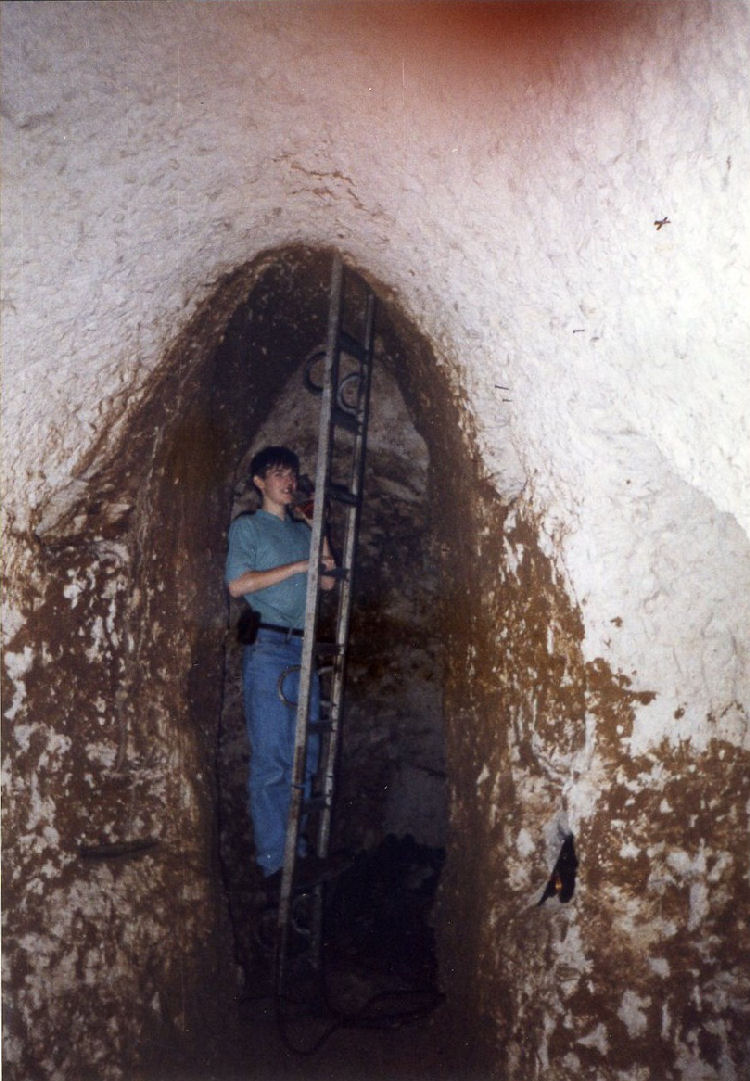
Inside the Dene hole, kindly supplied by Paul Wells.
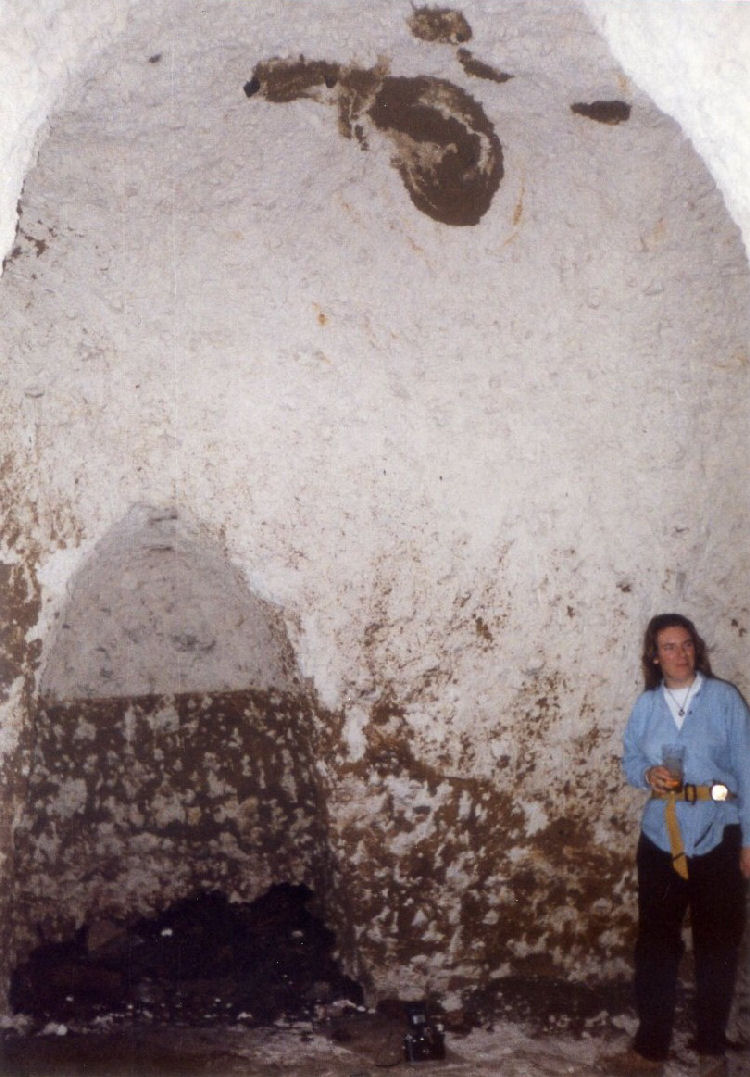
Inside the Dene hole, kindly supplied by Paul Wells.
|
|
From the Dover Express and East Kent News, Friday 14
July, 1939.
WINGHAM PETTY SESSIONS
An application was made for approval for plans for the conversion of
the public bar of the "Eight Bells," Wingham Well, into a saloon bar,
and improvements to the living accommodation.
The Chairman said that as the licence had changed hands so often the
bench had thought of referring the licence, so they hardly thought they
could ask the brewers to spend money on it. Therefore the application
would be deferred.
|
|
From the Dover Express and East Kent News, Friday,
11 March, 1949.
LICENCE
William A. V. Ralestone, licensee of the "Eight Bells," Wingham, was
granted a billiards licence, to enable bar billiards to be played at his
house.
|
|
From the 1948 Whitbread & Co Ltd 'Inns of Kent'
"From the landlord at
the "Swan," in Wickhambreux came rumours of portentous happenings at
the
"Eight Bells" at Wickham Well - no more than four or five miles away south
of the Canterbury-Sandwich road - and there in due course was unearthed
a story surely unique in the long history of the English inn. A few
years ago the landlord of the "Eight Bells" was disturbed over his evening
chop by a sudden loud and disturbing rumbling under his very chair. For
generations before this there had been noted strange matters, such as
the oddly loud way in which people walking on the road outside could be
heard as if from under the floor of the bar, and the way in which small
subsidence's appeared in the floor from time to time, and so on, but
nothing 'what one might say, definite, like'. At this loud rumbling the
landlord jumped up in alarm and, looking round, found a subsidence a few
feet from his back door. Thereupon a bucket of water soon produced a
funnelling and further subsidence's (but as yet no evidence of brimstone
and sulphur).
This was obviously a matter for Higher Authority and, in due course,
came architects and builders, and after excavating, not without risk to
life and limb, a vertical shaft with foot-holes, some eighteen feet deep
cut into solid chalk, was found to lead into a main chamber 20 feet
long. Thence seven smaller chambers led out and there is evidence of
further tunnels which are marked down for excavation. As to what the
chambers are, experts differ, opinions ranging from Neolithic dene holes
of circa 2000 BC to an Early Christian meeting-place of the second
century AD. It is true that there is a 'Dene Farm' marked on the
one-inch Ordnance Survey map only a mile or so away; while local
knowledge, pointing to where a 'lane' of corn is ripening more quickly
than the rest of the field, will claim that it marks the line of a Roman
road. This is probably true, for, although not so marked on the Ordnance
map, in a district so heavily Romanised as this, local knowledge is
often synonymous with fact.
Whichever construction the reader may wish to put on this phenomenon
(and the writer has a sneaking idea that the smugglers of the eighteenth
century may have known all about it), the fact remains that the caves
are there for all to see. It is hoped that ladders will also be
available for the more venturesome."
|
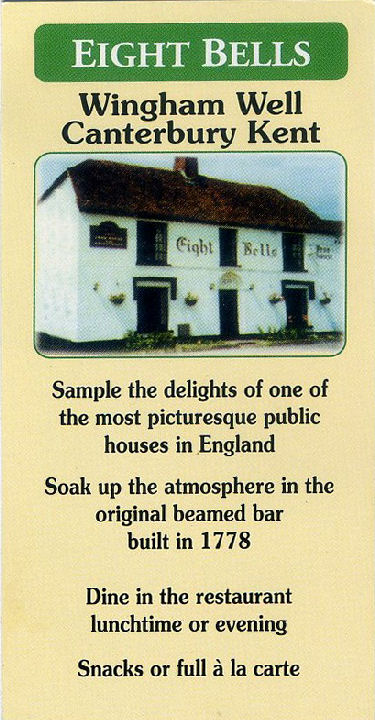 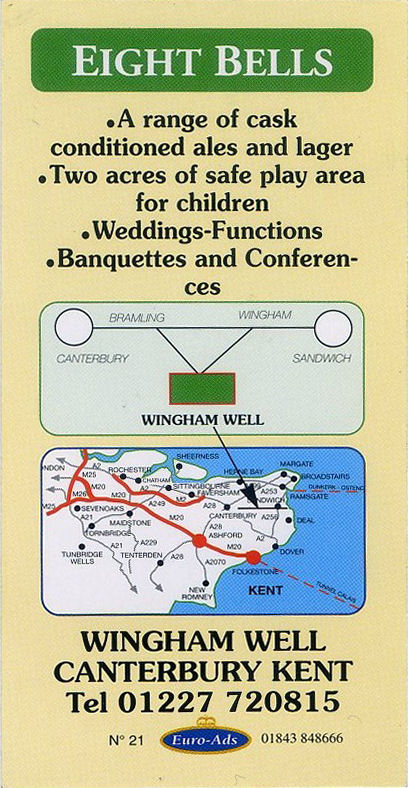
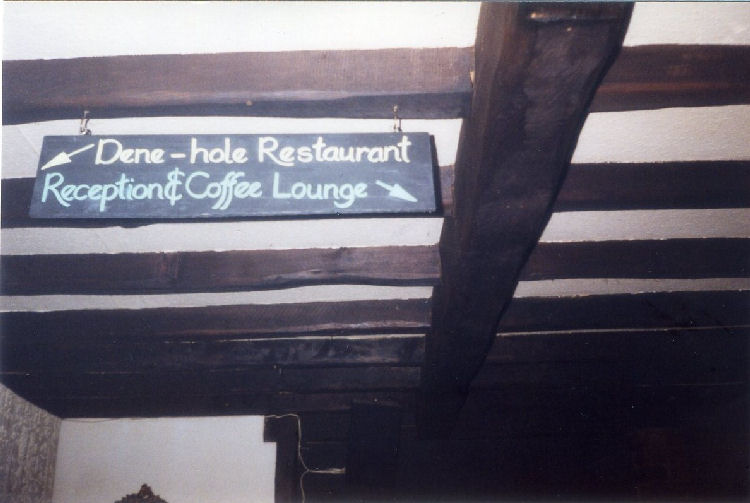
Above leaflets and photo of the inside of the pub, kindly supplied by
Paul Wells. |
A web site accessed in 2016 said the premises had just been sold for
£795,000 and it was described as 6 bedrooms detached.
LICENSEE LIST
HOLNESS John 1740+

TUCKER Edmund 1847+
 (beerhouse)
(beerhouse)
GOLDFINCH George 1861+

COCK John 1871+ (age 52 in 1871 ) )
GANN Mr H early 1900s-1919+

GURR Harold 1922-Jan/23

COLEMAN Edward John Jan/1923+

FRIEND Mr G E Feb/1939
 (beerhouse) (beerhouse)
RILSTONE/RALESTONE William A V Feb/1939-50+

PITTS Sidney J 1952-74+
  Fremlins
Fremlins
 From Wingham Division Ale Licences 1740 Ref: KAO - QRLV 3/1 From Wingham Division Ale Licences 1740 Ref: KAO - QRLV 3/1
 From
Bagshaw Directory 1847 From
Bagshaw Directory 1847
 Library archives 1974 Library archives 1974
 From the Dover Express From the Dover Express
 Census Census
|

















